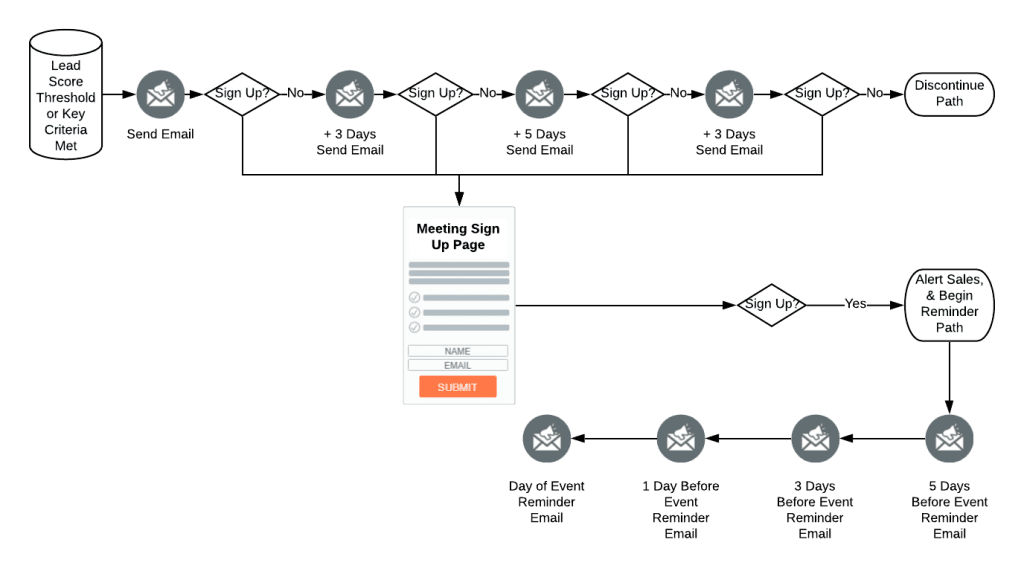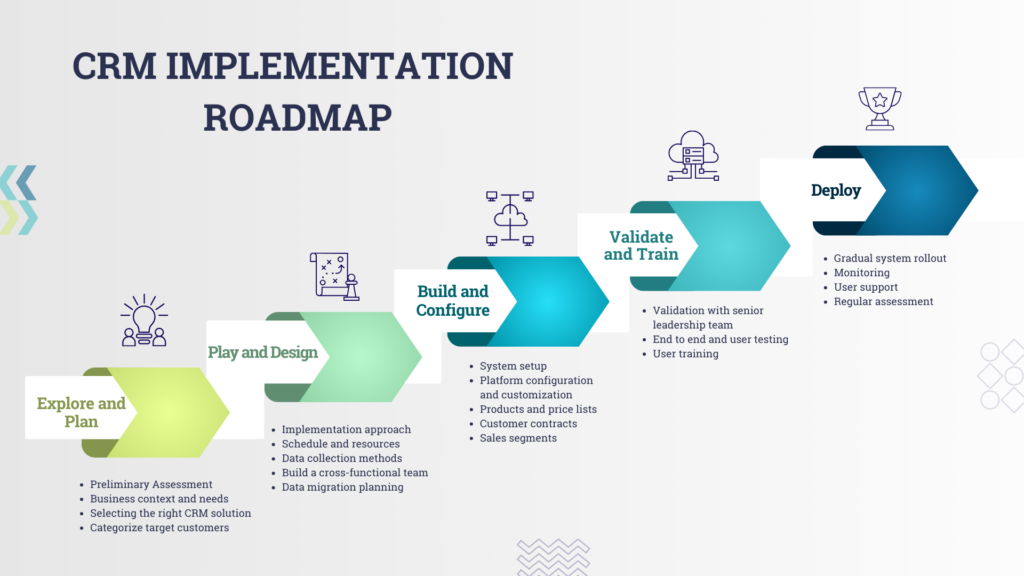
Supercharge Your Marketing: Mastering CRM Workflow Automation
In today’s fast-paced digital landscape, marketing teams are constantly juggling multiple tasks, campaigns, and customer interactions. The key to success lies in efficiency, personalization, and a seamless customer experience. This is where CRM workflow automation comes into play. By automating repetitive tasks and streamlining processes, businesses can free up valuable time, reduce errors, and ultimately, drive more revenue. This article will delve deep into the world of CRM workflow automation, providing you with the knowledge and tools you need to transform your marketing efforts.
What is CRM Workflow Automation?
At its core, CRM (Customer Relationship Management) workflow automation involves using software to automate a series of tasks or actions within your CRM system. These workflows are typically triggered by specific events or conditions, such as a customer filling out a form, making a purchase, or reaching a certain stage in the sales pipeline. The automation then executes a predefined sequence of actions, such as sending emails, updating contact information, or assigning tasks to team members.
Think of it as setting up a series of “if-then” statements that tell your CRM system what to do when certain conditions are met. For example: “If a new lead fills out a contact form, then send them a welcome email and assign them to a sales representative.” This eliminates the need for manual intervention, saving time and ensuring that every lead receives a timely and personalized response.
The benefits of CRM workflow automation are numerous, including:
- Increased Efficiency: Automate repetitive tasks, freeing up your team to focus on more strategic initiatives.
- Reduced Errors: Minimize human error by automating tasks and ensuring consistency in your processes.
- Improved Customer Experience: Provide timely and personalized interactions, leading to higher customer satisfaction.
- Enhanced Sales Performance: Nurture leads, track progress, and close deals more effectively.
- Data-Driven Insights: Gain valuable insights into your customer journey and optimize your marketing efforts.
Key Components of a CRM Workflow Automation System
To effectively implement CRM workflow automation, you need to understand the key components that make it work. These elements work together to create a seamless and efficient system.
Triggers
Triggers are the events or conditions that initiate a workflow. They act as the starting point for the automation process. Common triggers include:
- New contact creation
- Form submissions
- Website activity (e.g., page views, downloads)
- Email opens and clicks
- Purchase history
- Lead scoring thresholds
- Date-based events (e.g., birthdays, renewal dates)
Choosing the right triggers is crucial for ensuring your workflows are relevant and effective. Consider the specific actions you want to automate and the events that signal the need for those actions.
Actions
Actions are the specific tasks or steps that are executed when a trigger is activated. These are the “then” part of the “if-then” statement. Examples of actions include:
- Sending emails
- Updating contact information
- Assigning tasks to team members
- Adding or removing tags
- Updating deal stages
- Sending SMS messages
- Creating new records
- Integrating with other applications
The actions you choose will depend on your business goals and the specific workflow you’re creating. The goal is to automate the necessary steps to achieve the desired outcome.
Conditions
Conditions add an extra layer of logic to your workflows, allowing you to tailor actions based on specific criteria. Conditions are the “if” part of the “if-then” statement. For instance, “If a lead is from the United States, then send them a specific email sequence.” Conditions enable you to create personalized experiences.
Conditions can be based on a variety of factors, such as:
- Contact information (e.g., location, job title)
- Lead source
- Purchase history
- Lead scoring
- Deal stage
Using conditions allows you to create highly targeted and relevant workflows that resonate with your audience.
Automation Platform
The automation platform is the software that allows you to build, manage, and execute your workflows. There are many CRM systems that offer built-in workflow automation capabilities, while others integrate with dedicated automation platforms. The best platform for your business will depend on your specific needs and budget.
Building Effective CRM Workflows: A Step-by-Step Guide
Creating effective CRM workflows involves careful planning and execution. Follow these steps to ensure your workflows are successful.
1. Define Your Goals
Before you start building any workflows, it’s essential to define your goals. What do you want to achieve with automation? Are you trying to improve lead nurturing, streamline the sales process, or enhance customer service? Clearly defined goals will guide your workflow design and help you measure your success.
Examples of goals include:
- Increase lead conversion rates
- Improve customer satisfaction
- Reduce sales cycle length
- Increase customer lifetime value
2. Identify the Processes to Automate
Once you have your goals in place, identify the specific processes you want to automate. Look for tasks that are repetitive, time-consuming, and prone to errors. These are the prime candidates for automation. Analyze your current workflows and identify bottlenecks and areas for improvement.
Consider processes such as:
- Lead qualification and nurturing
- Sales follow-up
- Customer onboarding
- Customer support ticket management
- Feedback collection
3. Choose Your Triggers, Actions, and Conditions
Carefully select the triggers, actions, and conditions that are relevant to your chosen processes. Ensure that the triggers are accurate and that the actions align with your goals. Use conditions to personalize the experience and target specific segments of your audience.
For example, if you’re automating lead nurturing, your trigger might be a new lead filling out a contact form. Your actions might include sending a welcome email, adding the lead to a specific marketing campaign, and assigning the lead to a sales representative. You could use conditions to segment leads based on their industry or interests.
4. Design Your Workflow
Visualizing your workflow before you build it can be incredibly beneficial. Use a flowchart or diagram to map out the steps in your automation. This will help you identify potential issues and ensure that the workflow flows logically. Consider the customer journey and how the workflow will impact their experience.
5. Build Your Workflow in Your CRM System
Once you have a clear plan, it’s time to build your workflow in your CRM system. Most CRM systems offer a user-friendly interface for creating workflows, often with drag-and-drop functionality. Follow the instructions provided by your CRM system and test your workflows thoroughly as you build them.
6. Test and Refine Your Workflow
Before you launch your workflow, test it thoroughly to ensure it’s working as expected. Send test emails, create test leads, and simulate various scenarios to verify that the actions are being executed correctly. Make adjustments as needed and refine your workflow based on your testing results.
7. Monitor and Optimize Your Workflow
Once your workflow is live, monitor its performance regularly. Track key metrics such as open rates, click-through rates, conversion rates, and customer satisfaction scores. Use this data to identify areas for improvement and optimize your workflow over time. Automation is not a set-it-and-forget-it process. Continuously analyze the results and make adjustments to maximize its effectiveness.
Examples of CRM Workflow Automation in Action
To better understand the practical application of CRM workflow automation, let’s look at some real-world examples.
Lead Nurturing
Scenario: A new lead downloads a valuable piece of content from your website.
Workflow:
- Trigger: Content download.
- Action 1: Send a personalized welcome email with a link to the content.
- Action 2: Add the lead to a specific lead nurturing email sequence based on the content they downloaded.
- Action 3: Assign the lead a lead score based on their activity (e.g., website visits, email opens).
- Action 4: If the lead score reaches a certain threshold, assign the lead to a sales representative.
Benefit: Nurtures leads with relevant content, increases engagement, and improves lead qualification.
Sales Follow-Up
Scenario: A sales representative makes a phone call to a potential client.
Workflow:
- Trigger: Phone call completed.
- Action 1: Automatically log the call in the CRM system.
- Action 2: Send a follow-up email with a summary of the call and any relevant resources.
- Action 3: Schedule a follow-up task for the sales representative.
- Action 4: If the lead doesn’t respond within a certain timeframe, send a reminder email.
Benefit: Ensures consistent follow-up, keeps sales representatives organized, and increases the chances of closing deals.
Customer Onboarding
Scenario: A new customer makes a purchase.
Workflow:
- Trigger: Purchase made.
- Action 1: Send a welcome email with account details and onboarding instructions.
- Action 2: Create a support ticket for the new customer.
- Action 3: Add the customer to a specific customer onboarding email sequence.
- Action 4: Assign the customer to a customer success manager.
Benefit: Provides a smooth onboarding experience, reduces customer churn, and increases customer satisfaction.
Customer Support Ticket Management
Scenario: A customer submits a support ticket.
Workflow:
- Trigger: Support ticket submitted.
- Action 1: Automatically assign the ticket to the appropriate support agent.
- Action 2: Send an automated response acknowledging receipt of the ticket.
- Action 3: Based on the ticket’s priority, escalate the ticket to a supervisor if it remains unresolved after a certain time.
- Action 4: Send a follow-up email to the customer after the ticket is resolved, asking for feedback.
Benefit: Improves response times, streamlines support processes, and enhances customer satisfaction.
Choosing the Right CRM for Workflow Automation
Selecting the right CRM system is crucial for successful workflow automation. Consider these factors when making your decision:
Workflow Automation Capabilities
Ensure that the CRM system offers robust workflow automation features, including the ability to create complex workflows with multiple triggers, actions, and conditions. Look for a system that provides a user-friendly interface and a wide range of automation options.
Integration with Other Tools
Your CRM system should integrate seamlessly with other tools you use, such as email marketing platforms, marketing automation software, and social media management tools. This will allow you to create more comprehensive and automated workflows.
Scalability
Choose a CRM system that can scale with your business. As your business grows, you’ll need a system that can handle an increasing number of contacts, workflows, and data. Consider the system’s capacity and performance capabilities.
Ease of Use
A user-friendly CRM system will make it easier for your team to create, manage, and maintain workflows. Look for a system with a clear and intuitive interface, and consider the level of training and support provided by the vendor.
Pricing
Pricing varies significantly between CRM systems. Evaluate the pricing plans and choose a system that fits your budget and your business needs. Consider the features included in each plan and the overall value you’ll receive.
Reporting and Analytics
Choose a CRM system that provides robust reporting and analytics capabilities. This will allow you to track the performance of your workflows, identify areas for improvement, and measure your ROI.
Common Mistakes to Avoid in CRM Workflow Automation
While CRM workflow automation can be incredibly beneficial, there are some common mistakes that can hinder its effectiveness. Avoid these pitfalls to ensure your automation efforts are successful.
Over-Automation
Don’t automate everything. Focus on automating tasks that are repetitive, time-consuming, and prone to errors. Automating too many processes can lead to a loss of personalization and a negative customer experience.
Ignoring Personalization
Even though you’re automating, don’t forget the importance of personalization. Use conditions and dynamic content to tailor your workflows to each individual customer. Generic, impersonal communications will likely be ignored.
Lack of Testing
Always test your workflows thoroughly before launching them. Test different scenarios and ensure that the actions are being executed correctly. Neglecting testing can lead to errors and a poor customer experience.
Setting and Forgetting
Workflow automation is not a set-it-and-forget-it process. Continuously monitor your workflows, track their performance, and make adjustments as needed. Regularly review your workflows to ensure they are still relevant and effective.
Poor Data Quality
The quality of your data is crucial for effective workflow automation. Ensure that your CRM system contains accurate and up-to-date contact information. Poor data quality can lead to errors, wasted resources, and a negative customer experience.
Lack of Training
Provide your team with adequate training on how to use the CRM system and how to manage workflows. Well-trained team members will be more likely to use the system effectively and avoid making mistakes.
The Future of CRM Workflow Automation
CRM workflow automation is constantly evolving. As technology advances, we can expect to see even more sophisticated and intelligent automation capabilities. Here are some trends to watch:
Artificial Intelligence (AI) and Machine Learning (ML)
AI and ML are already playing a significant role in CRM workflow automation. These technologies can analyze customer data to identify patterns and predict behavior. This allows businesses to create more personalized and targeted workflows. Expect to see even more AI-powered automation in the future.
Hyper-Personalization
Customers expect personalized experiences. Automation will play a key role in enabling hyper-personalization, allowing businesses to tailor their interactions to each individual customer’s preferences, needs, and behaviors. This will involve using data to create highly targeted and relevant workflows.
Integration with Emerging Technologies
CRM systems will continue to integrate with emerging technologies, such as chatbots, voice assistants, and the Internet of Things (IoT). This will allow businesses to create more seamless and connected customer experiences.
Increased Focus on Customer Journey Mapping
Businesses will increasingly focus on mapping the customer journey and using automation to optimize each stage. This will involve creating workflows that guide customers through the sales funnel, provide exceptional customer service, and encourage loyalty.
Conclusion
CRM workflow automation is a powerful tool for marketing teams looking to improve efficiency, enhance customer experiences, and drive revenue growth. By automating repetitive tasks, personalizing interactions, and streamlining processes, businesses can free up valuable time and resources, allowing them to focus on more strategic initiatives. Mastering CRM workflow automation requires careful planning, the right tools, and a commitment to continuous improvement. By following the steps outlined in this article and avoiding common mistakes, you can unlock the full potential of CRM workflow automation and transform your marketing efforts. Embrace the future of marketing and leverage the power of automation to achieve your business goals.

